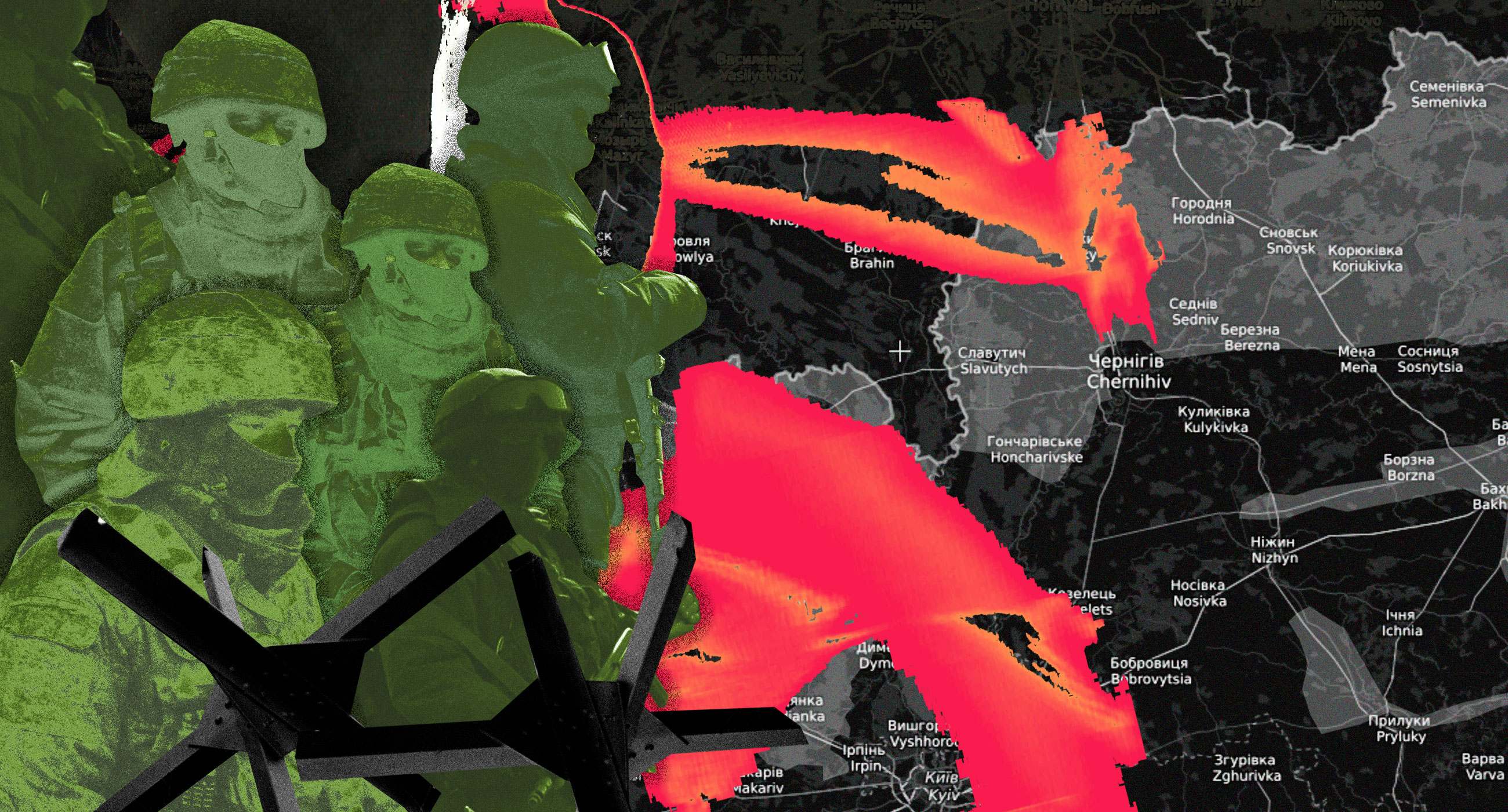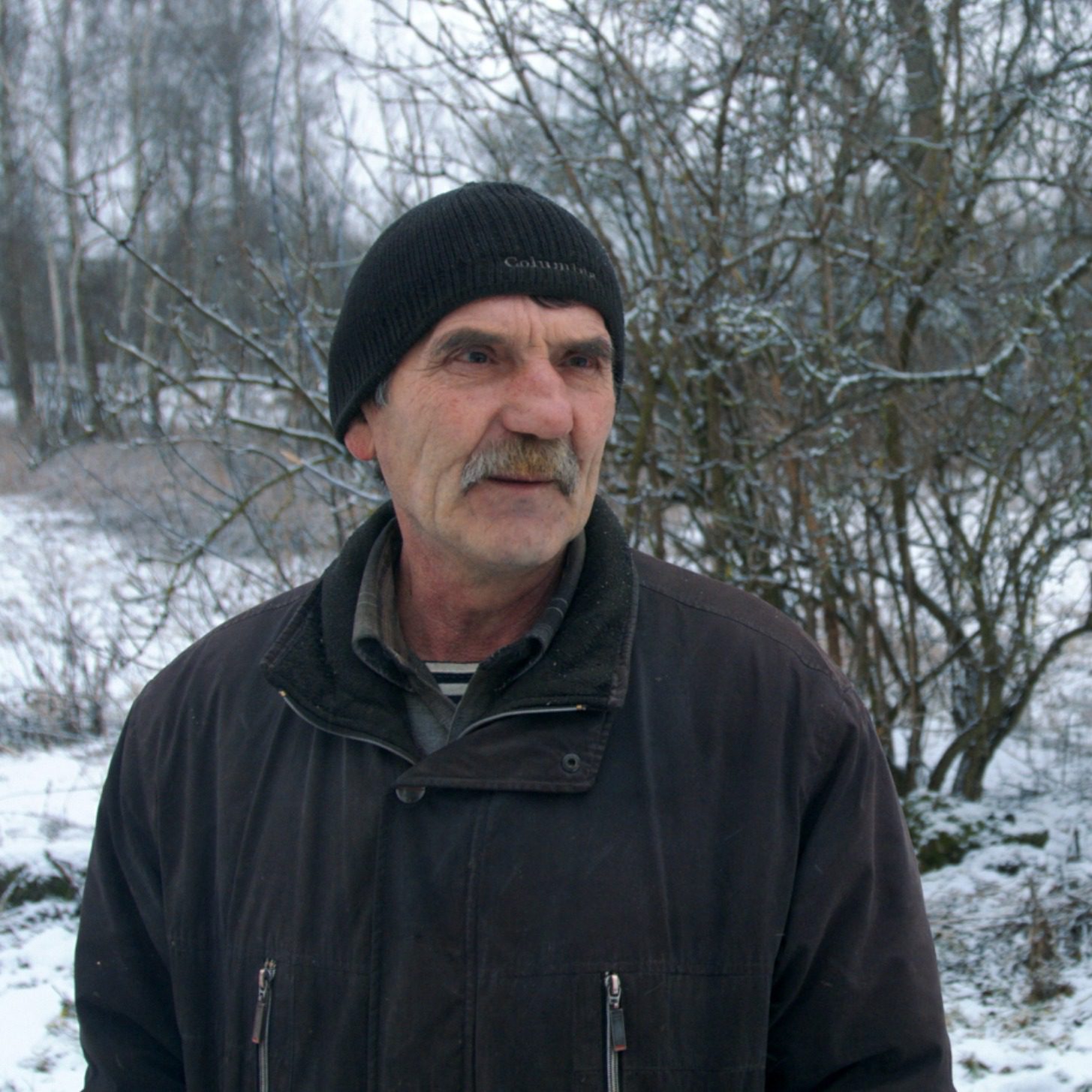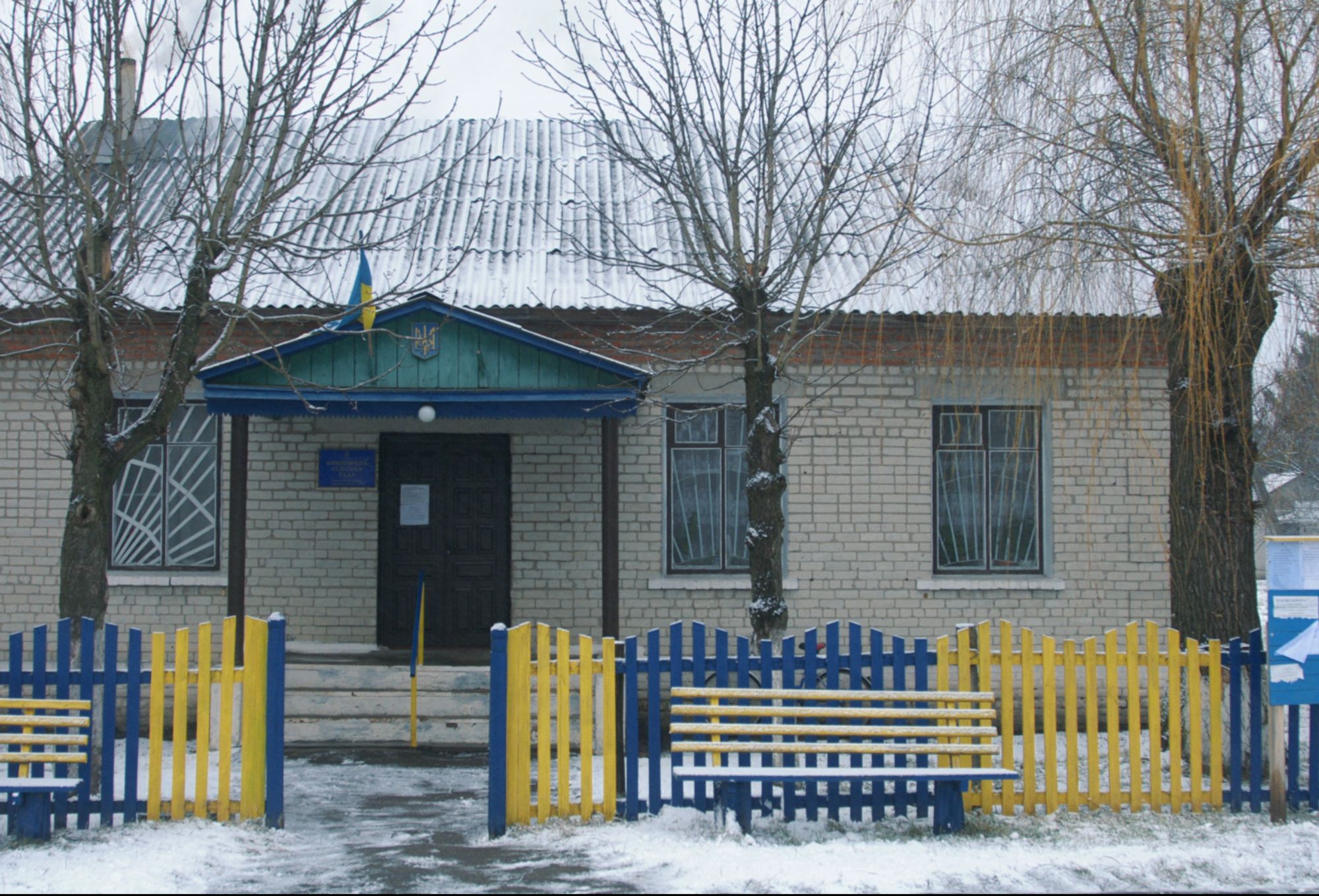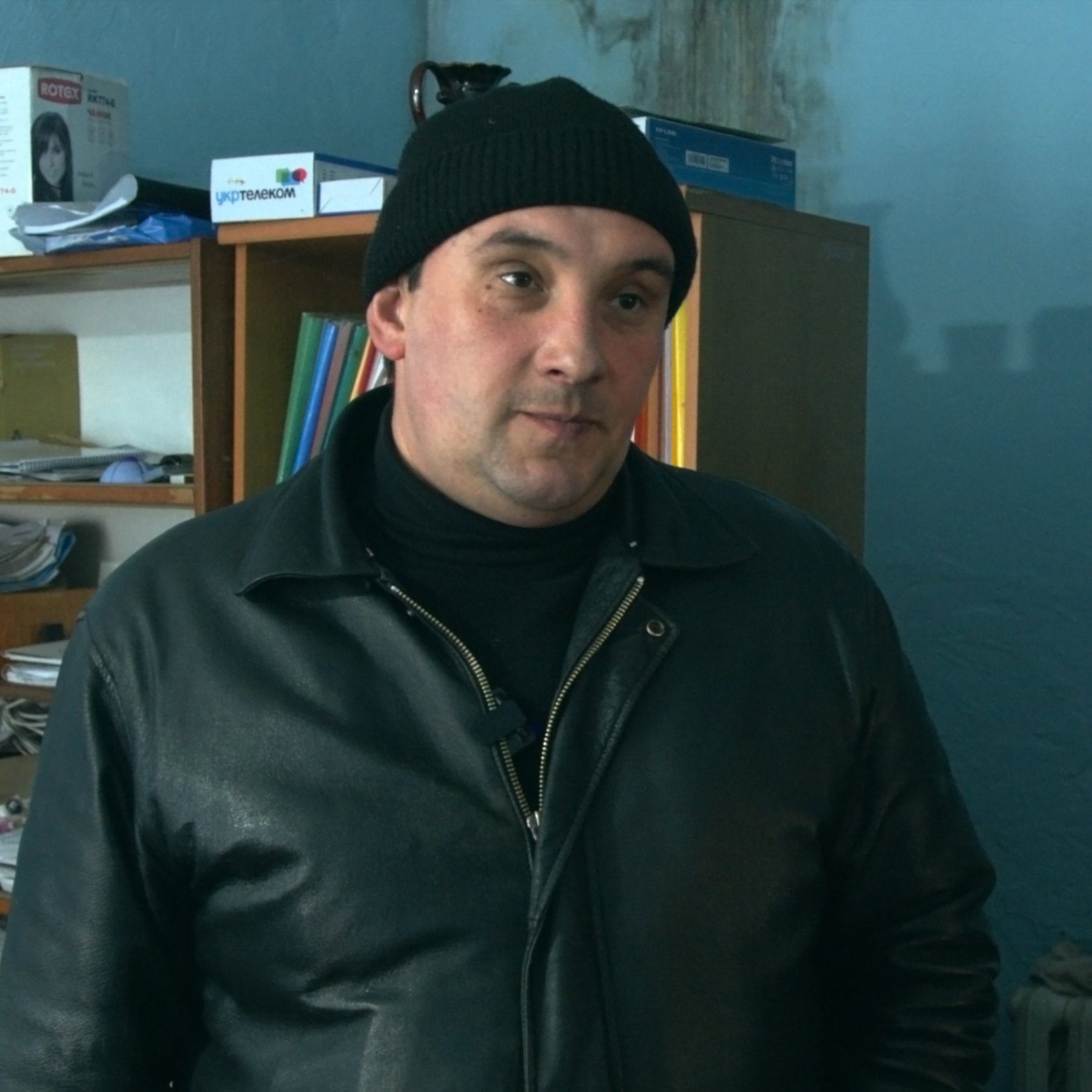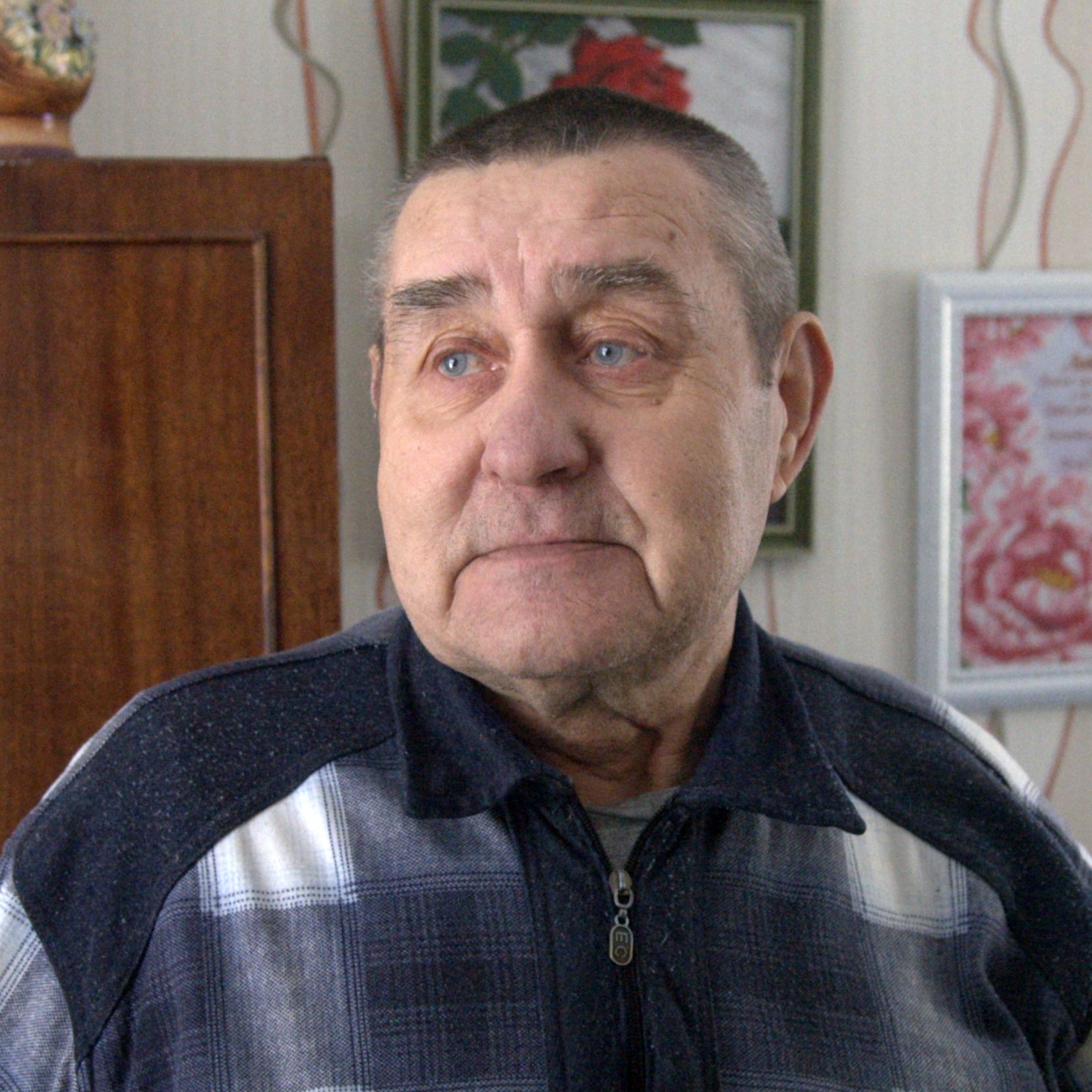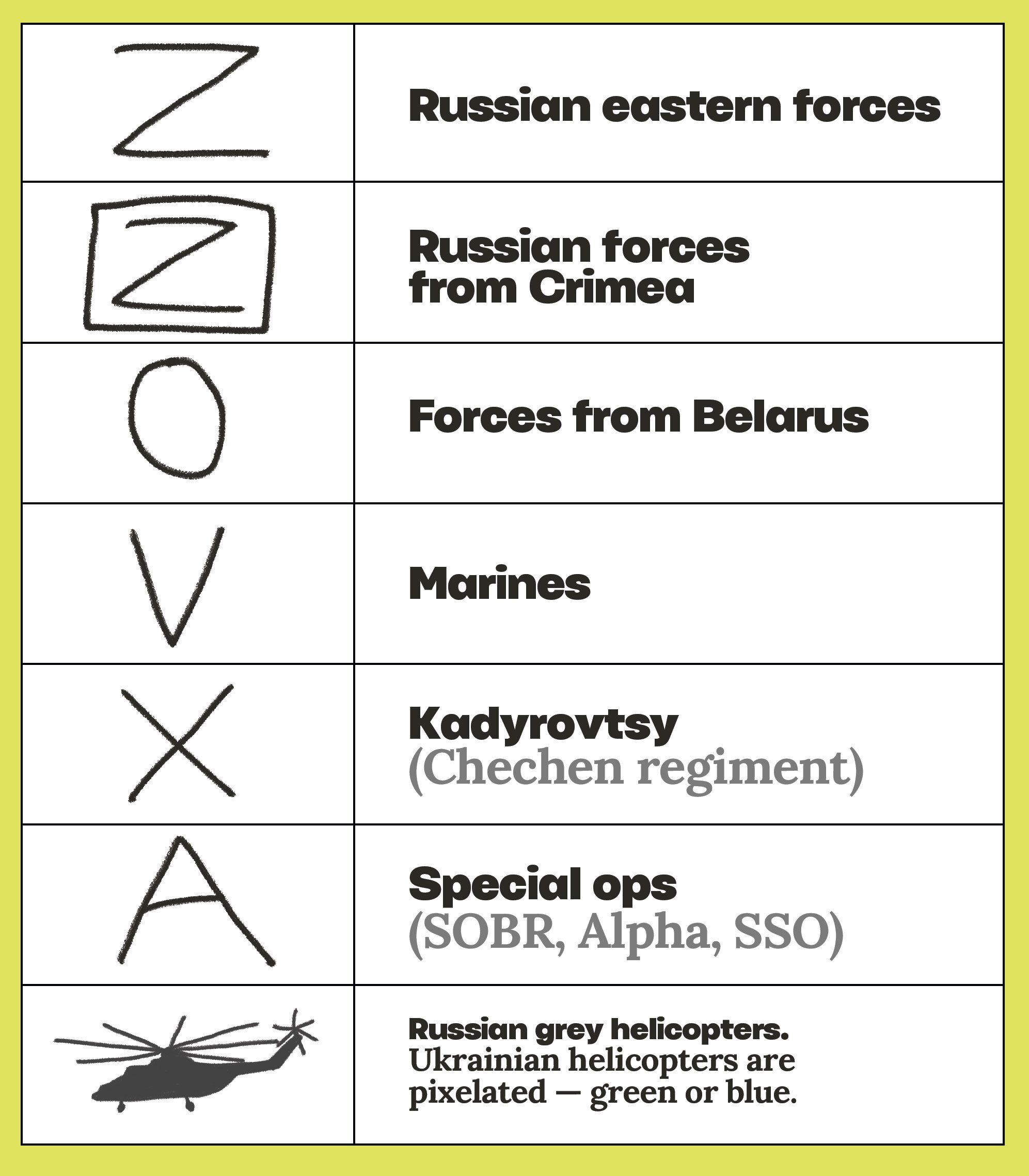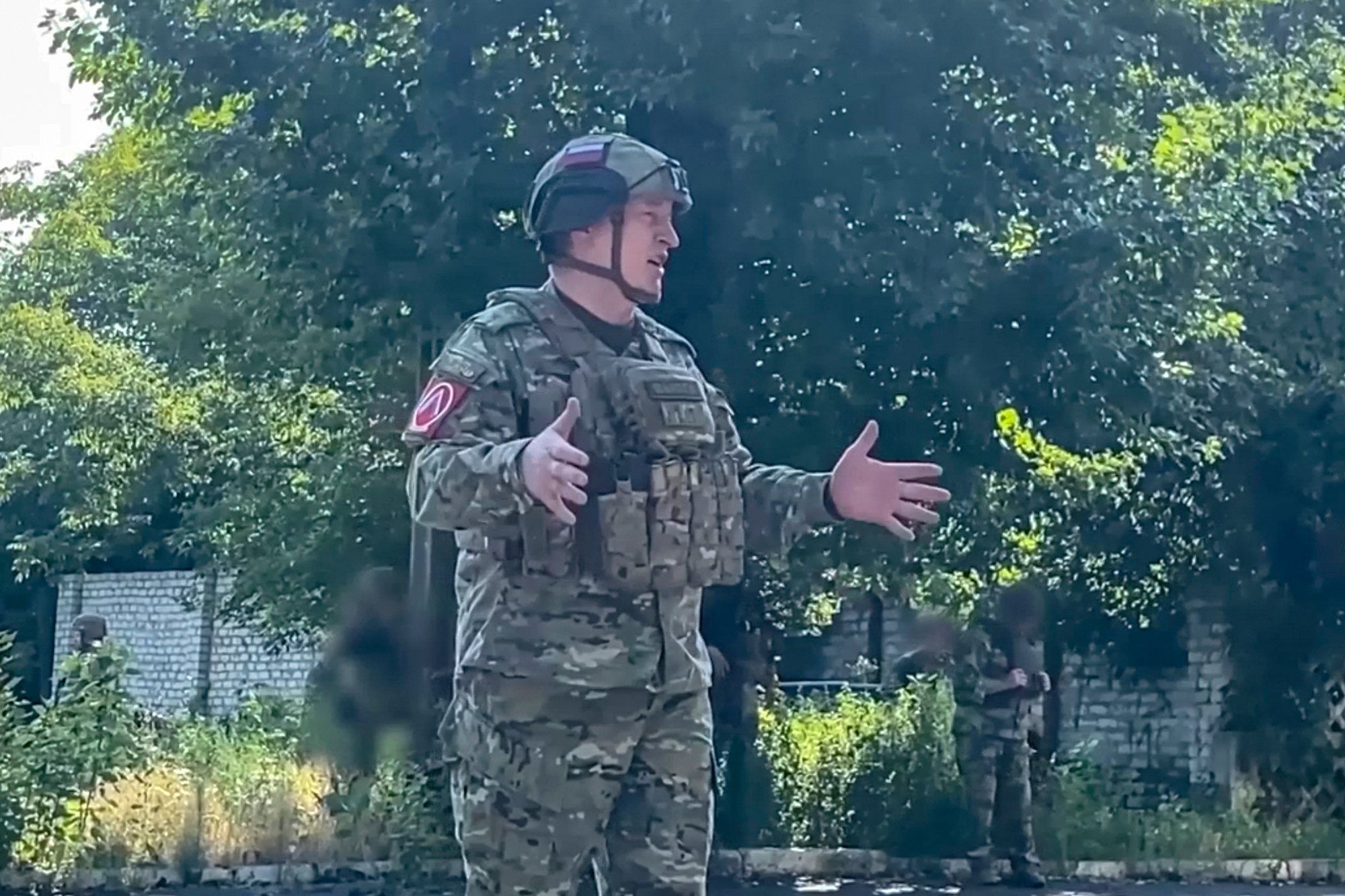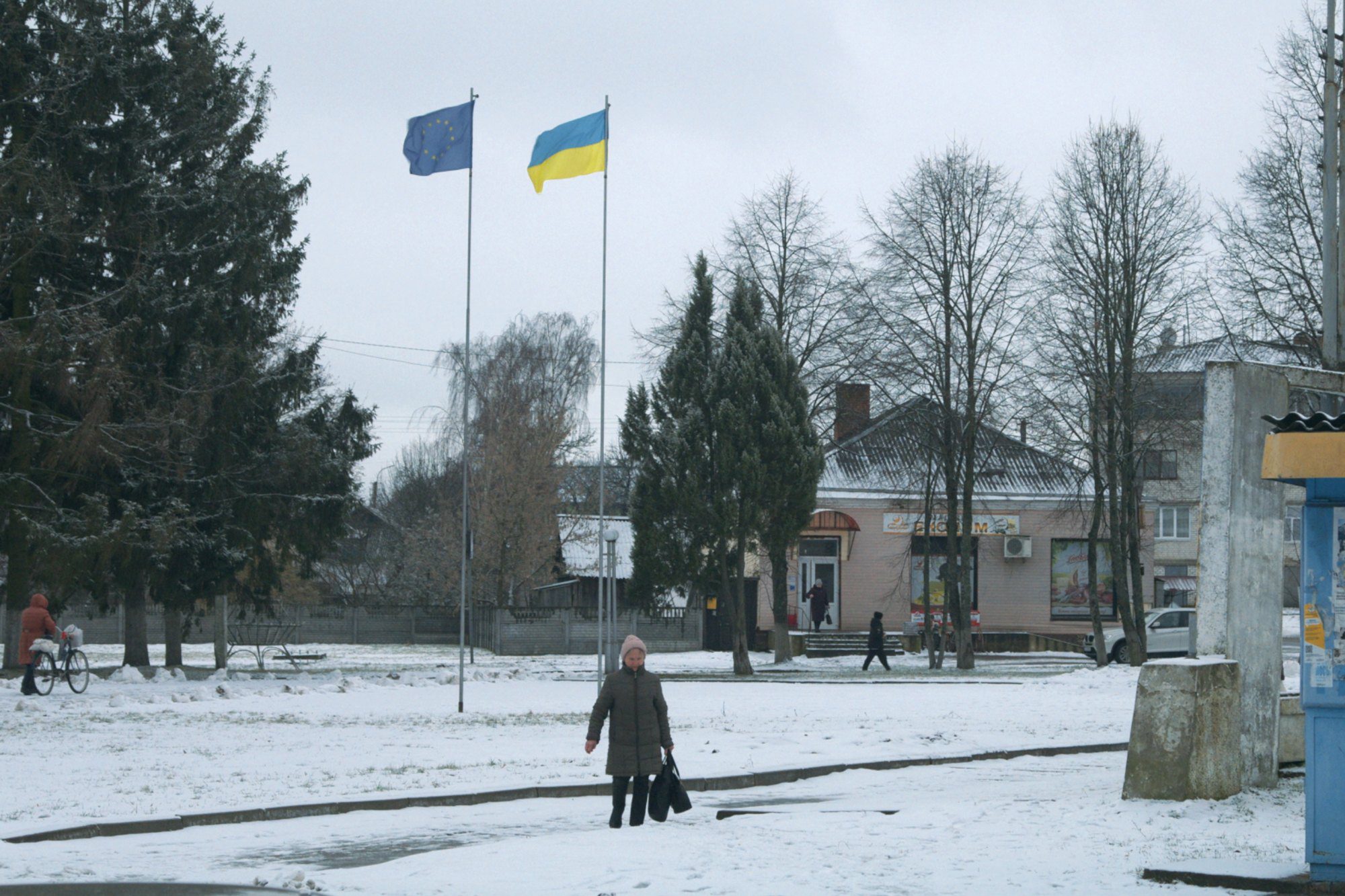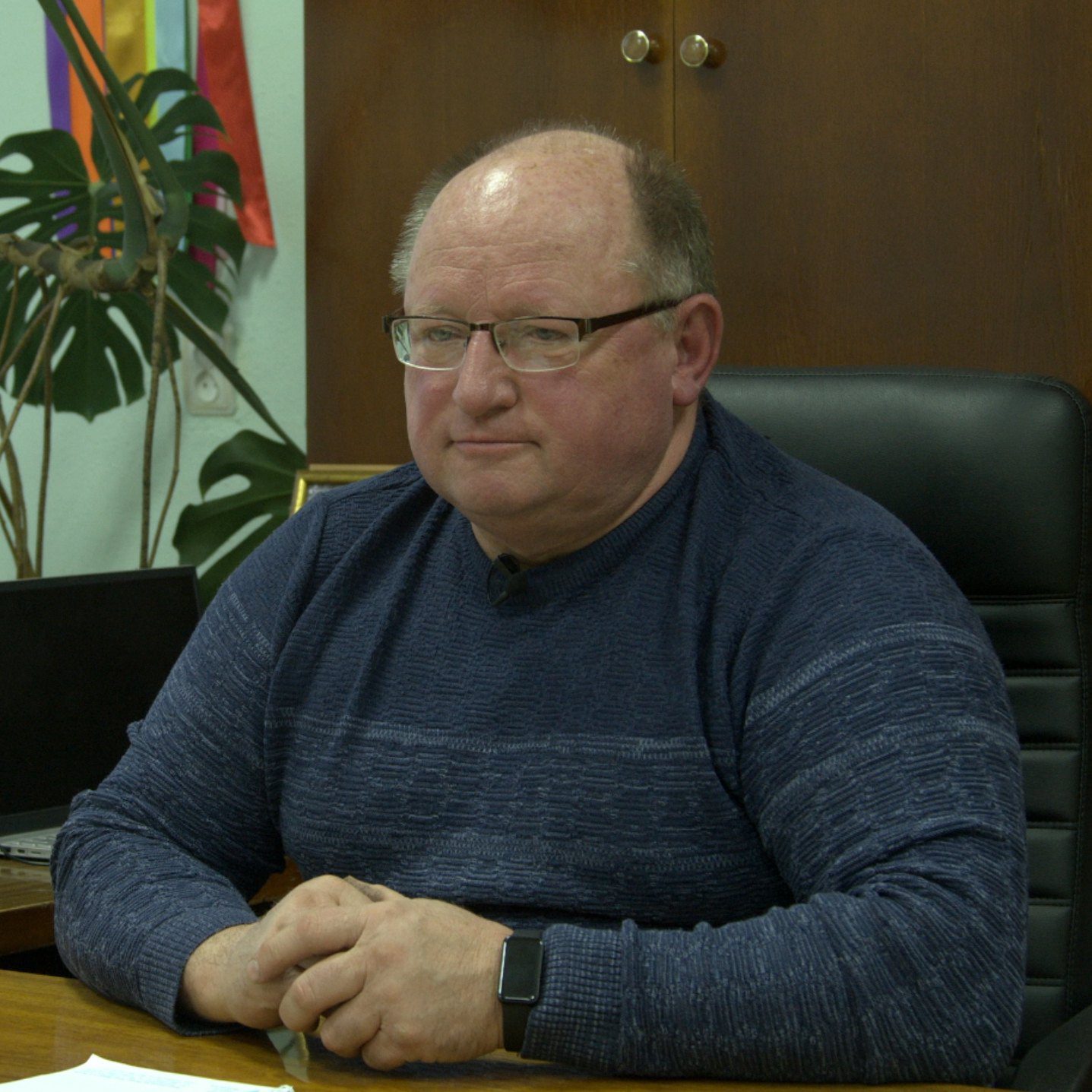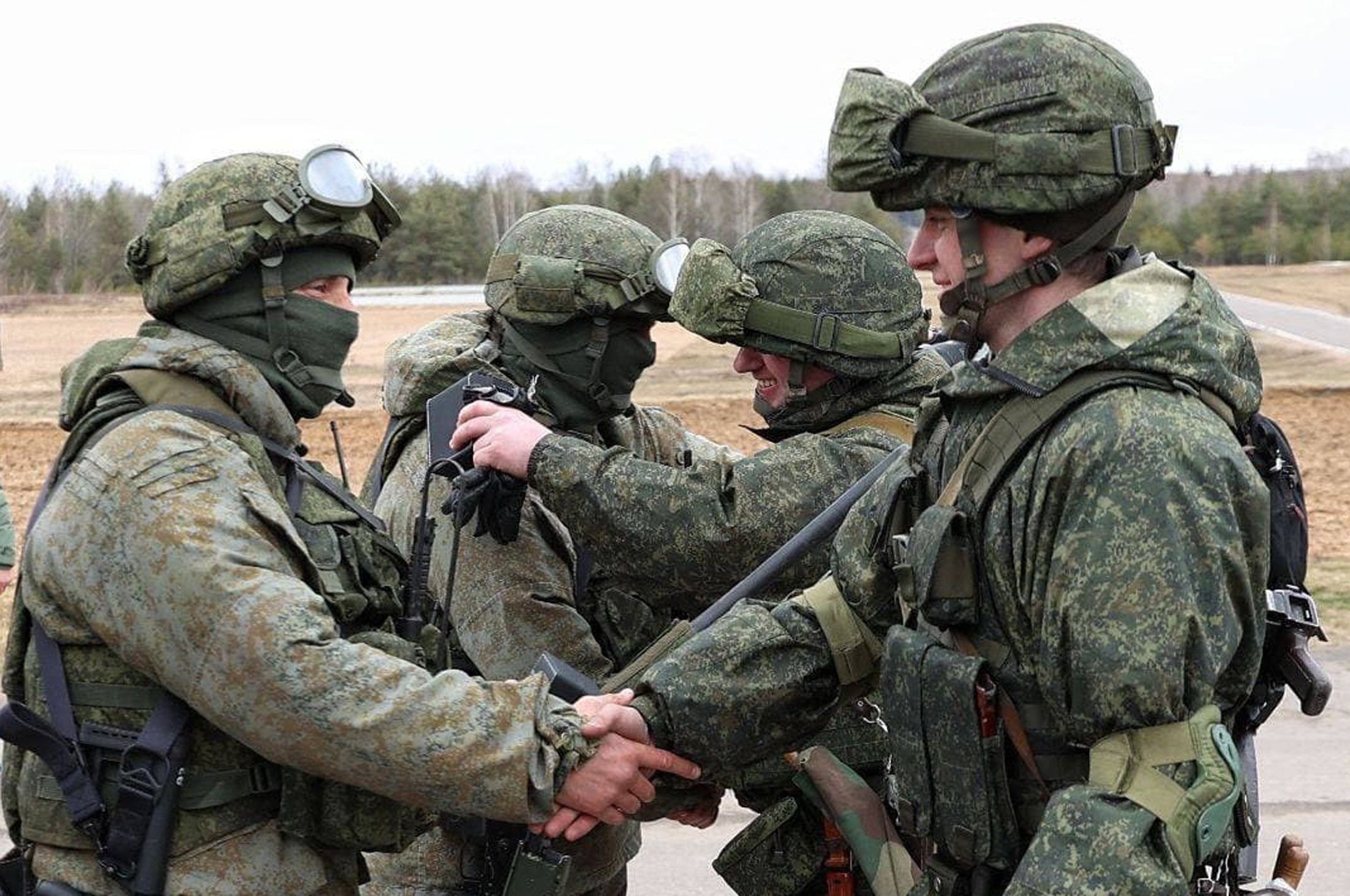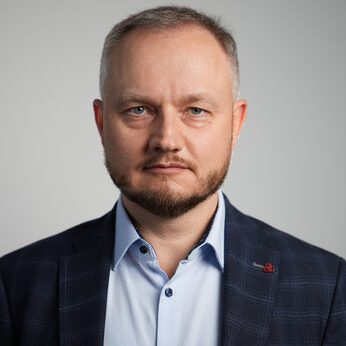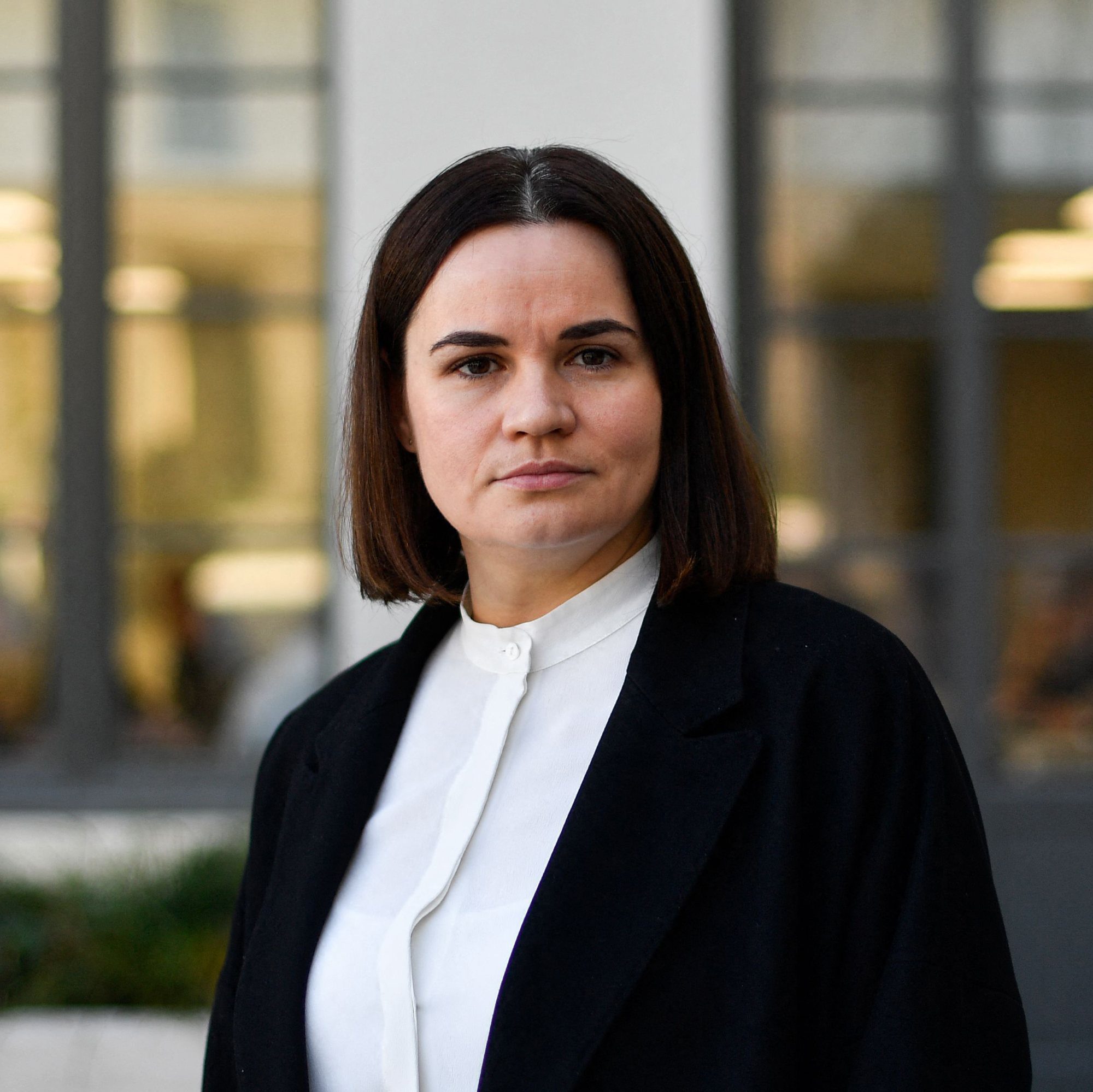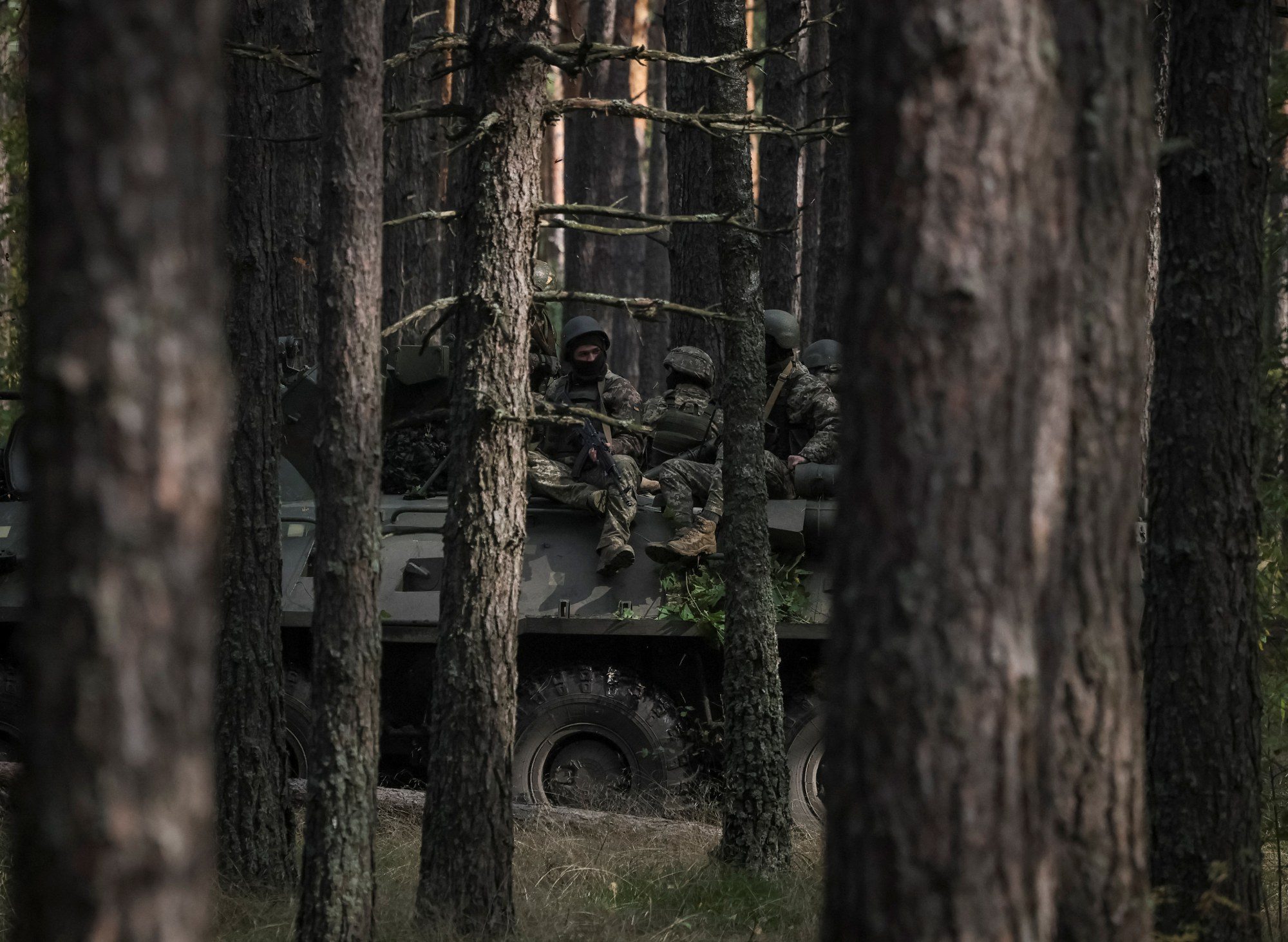Zaborona journalists found out that the army of Belarus participated in the full-scale Russian invasion of Ukraine in February-March 2022. However, Belarus does not have the status of an aggressor country, while Ukraine still maintains diplomatic relations with Minsk, and there are no criminal proceedings in the International Criminal Court regarding the participation of the Belarusian army in the war. Zaborona figured out how to distinguish Belarusian and Russian soldiers and interviewed witnesses from the Chernihiv region, where Belarusians were locating during the occupation.
Air alarms sound daily in Ukraine due to the takeoff of Russian missiles-launching planes not only from the territory of Russia or the Black Sea but also from Belarus. A year ago, convoys of Russian vehicles came from Belarus to “liberate” Chernihiv and Kyiv. However, neither Ukraine nor the world has determined who Belarus is in a full-fledged war. Some consider it a co-aggressor country, and some a victim, explaining that in a political sense, the country is occupied by the Russians. After the protests of 2020, the citizens of Belarus cannot influence the regime.
The President of Belarus, Oleksandr Lukashenko, claims Russia “never asked to attack Ukraine.” However, everyone probably remembers his words at the beginning of the invasion of Ukraine that “an attack had been prepared on Belarus” and “if a preemptive strike had not been launched six hours before […] they [Ukrainians] would have attacked our troops.” At the time, the Belarusian dictator effectively admitted that his country had joined in on the attack on its neighbor — and repeated it almost in the same words during a press conference a year after the invasion.
In addition, the intelligence services of Ukraine’s partner countries and independent organizations regularly warn of a possible new “full-scale attack” by Belarus and the possible inclusion of Belarusian troops in a ground operation. However, the military of Belarus has been participating in the invasion from its very beginning — and not only by sending planes with missiles from the airfield in Machulyshchy near Minsk or by providing the Russian army with barracks, hospitals, and other infrastructure.

Illustration: Maria Petrova / Zaborona
Witnesses of the occupation
Residents of the Chernihiv region in northern Ukraine, that has been occupied during February-March 2022, are ready to tell a lot about the Belarusian military operating alongside the Russians in these territories. Zaborona journalists spoke with dozens of witnesses to the presence of Belarusians.

Map of the advance of Russian troops in the north of Ukraine in February-March 2022. Infographic: Maria Petrova / Zaborona. Data: Liveuamap
One of the first bases of the invasion troops was in the village of Vyshneve, halfway from the Belarusian border to Chernihiv. The occupiers made a stronghold in the local school. In the basement, they held a torture chamber for local activists, members of the territorial defense, and employees of law enforcement agencies.
Ihor, a resident of Vyshneve, tells Zaborona that he communicated with the Belarusian military temporarily residing in the village — he mostly saw them at checkpoints.
“One of them told me: ‘My homeland is over your vegetable garden [hinting at the vicinity between the Ukrainian village and adjacent Belarus cities],’” recalls Igor. “He told me fables like ‘we are saving you from the Banderovtsy [Ukrainian nationalist troops, no longer exist]’. I asked: ‘And where did you see those people of Bandera? What is the language they speak with you here?’ He said: ‘Well, Russian.’ And then he asked: ‘Where can I get vodka?’ But we were lucky they had their headquarters here. They did not touch us, there were no repressions.”

Ihor, a resident of Vyshneve. Screenshot from Zaborona’s video
Employees of the Vyshneve village council, with whom Zaborona journalists spoke (they asked to remain anonymous due to a possible re-occupation), confirm that, besides the Russian occupiers, the Belarusian military was also present in the village. However, according to their observations, the Belarusians did not participate in the repressions but, most likely, “monitored public order” and collected information about residents

Village council of Vyshneve, Chernihiv region. Screenshot from Zaborona’s video
A similar situation happened in the village of Mykhailo-Kotsyubynske, not far from Chernihiv, where several groups of the Belarusian military were based. Judging by the testimonies of residents, their tasks included holding occupied positions and patrolling while the Russian troops were trying to reach Chernihiv. It is perhaps the closest point to the front line that the Belarusians reached then.
Oleksandr, a technician at Mykhailo-Kotsyubynsky waterworks, told Zaborona that the occupying military used to reside amidst the civilians’ houses. In particular, they headquartered in the building of the water supply company’s fire department, located in the village’s center.

Oleksandr, an employee of the Mykhailo-Kotsyubynske village waterworks. Screenshot from Zaborona’s video
“Belarusians didn’t do anything special here,” says Oleksandr. “Two Russian cars were driving here, and one was theirs. They walked together.”
According to him, the Belarusian military was dressed in a uniform slightly different from the Russian one.
“If the Russian [uniform] is dark and camouflaged, [the Belarusian one] is just slightly green, and no one had chevrons or epaulets,” Oleksandr says.
There are also reports about the participation of the Belarusian military in the village of Bobrovytsia, Nizhyn district, Chernihiv region. In a conversation with Zaborona, a local resident Mykhailo Chernenko says he spoke with the Belarusian military.

Mykhailo, a resident of Bobrovytsy. Screenshot from Zaborona’s video
He said they distributed humanitarian aid and “guarded” the village. Also, he says that the Belarusians explained that they mark their military equipment with the letter “O.”
The letter “O.” Who commanded the Belarusians?
At the beginning of the invasion, the Armed Forces of Ukraine distributed notes on the identification of occupiers’ military equipment on social networks. Among the “Z” and “V” marks, there was equipment with the letter “O.” According to the Ukrainian Armed Forces, this is how Belarusian equipment was marked.

Infographic: Maria Petrova / Prohibition. Data: Joint Forces Group
On March 1, Vitaly Kyrylov, the North Regional Directorate of the Territorial Defense Forces spokesman, told on the Ukrainian National News Marathon that Belarusian troops had entered the Chernihiv region and that the convoy was moving from the direction of Horodna in the direction of Chernihiv.
During the full-scale war it was, in fact, the only official news about the invasion of Belarusian troops, which also coincided with Ukraine’s negotiations with Russia, so it quickly spread around the world. On the same day, the official accounts of the Verkhovna Rada confirmed it, as well as the State Intelligence Service and dozens of political figures.
In a conversation with Zaborona, Vitaly Kyrylov confirmed that such information did indeed come to him from the military leadership of Ukraine. However, after that, official reports about the participation of the Belarusian military stopped for some reason.
He also explains that “the entering equipment with the marking of a white circle with a black inside” was from Belarus. The letter “O” allegedly did not denote the Belarusian military, but only the direction.

Vitaliy Kyrylov, spokesman of the Regional Directorate of Territorial Defense Forces North. Screenshot from Zaborona’s video
According to Russian legend, the letter “O” marked the command of the Center forces under the leadership of the Russian Colonel general Oleksandr Lapin. Center is a military formation of the Central Military District, encompassing brigades from Siberia and the Russian North — it was the least numerous group in the full-scale invasion that had the most limited tasks. Judging by the official Russian news, the main mission of the Center formation was reduced to supporting the capture of Chernihiv.
Bellingcat journalists stated Lapin had transported the Buk anti-aircraft missile system to the occupied Donetsk region in 2014. This very Buk shot down the Malaysian Boeing MH17 with 298 people on board. However, Lapin’s name was not mentioned during the hearings in The Hague.
In 2017, Oleksandr Lapin was the head of staff of the Russian Aerospace Forces in Syria. He was responsible for the mass bombing of the civilian population far from the terrorists’ positions. He was the deputy of General Sergei Surovikin, the author of the “scorched earth” bombing tactics — the mere destruction of cities. According to information from the Ministry of Defense of the Russian Federation, it was Lapin who commanded the destruction of Lysychansk in the Luhansk region in the summer of 2022. For this, he received the Star of the Hero of Russia.

08 August 2022 shows Russian Commander of the Central Military District Colonel-General Alexander Lapin attending a ceremony where he presented state awards to Russian servicemen, at an undisclosed location in Ukraine. Screenshot from the video: EPA / RUSSIAN DEFENCE MINISTRY PRESS SERVICE
According to his statements, Lapin is adept of the resurrection of the USSR and votes for the creation of a “union army” of the former Soviet Union countries. Most likely, this is why the personnel of the Center (or “O”) group wore a chevron with the USSR flag instead of the statutory chevrons. Some witnesses of the occupation in the border areas of the Chernihiv region, including representatives of the local authorities, mention this.
The nameless power of chevrons
On February 28, 2022, Russian and Belarusian troops entered the village of Ripky, 30 kilometers from the border with Belarus. In a conversation with Zaborona, the head of the Ripky territorial community Serhii Garus says that he had to communicate a lot with the Belarusian military because of the occupation of the area.

The village of Ripky. Screenshot from Zaborona’s video
According to Garus, among the occupiers were officers of the Russian FSS, commanders of the Russian Guard, and probably representatives of the Belarusian KGB, who, together with the FSS, called themselves the “Ministry of Provision.”
“It was clear from their stance, posture, and age that the Belarusians were former security forces,” says the head of the Ripky community. “When we told [the Russian occupiers] we didn’t need them, the commander of the Russian Guard said: ‘Then we will join you with Belarus, since you have everything.’”

Serhii Garus, head of the Ripky territorial community. Screenshot from Zaborona’s video
According to Garbus, the Russian uniform had the USSR chevrons, while Belarus’ uniform was similar but was lacking chevrons.
After the collapse of the USSR and until the mid-1990s, the Belarusian military uniform was actually Soviet, distinguished only by new insignia and chevrons (their own uniform was developed later). In 2009, the pixelated uniform has been introduced that looked similar to the Russian one, but in a lighter shade. It is quite difficult to distinguish it from Russian uniforms, both for an ordinary citizen and even for a man of war.
In 2019, another military reform took place in Belarus — the Security Council approved “a new defense plan for Belarus and the Concept for the Construction and Development of the Armed Forces until 2030.” This reform cemented cooperation with the Russian army. Since then, the military uniforms of Belarusians have been designed to look like the Russian ones, due to the integration of the two armies into the so-called allied army (and to better distinguish between friends and foes on the battlefield).
In fact, Russian and Belarusian soldiers are distinguished only by their chevrons.

This handout video grab taken and released by the Belarusian Defense Ministry on February 19, 2022, shows Russian (L) and Belarusian (R) soldiers shaking hands during joint exercises of the armed forces of Russia and Belarus as part of an inspection of the Union States Response Force, at a firing range near Brest. Photo by Handout / MINISTRY OF DEFENSE, REPUBLIC OF BELARUS / AFP
Like in Russia, Belarus’ military equipment is mostly represented by the Soviet vehicle fleet, with some modernization. Since 2019, the equipment has been in the standard muted dark green color, also unified for the two allied armies. Belarus has also been upgrading its fleet with its own MAZ trucks, too, but has mostly imported or received donations of KamAZs, Tigers, and UAZs from Russia. Only the uniforms of the security forces, such as the KGB special forces of Belarus, are black or plain light green.
In other words, it is impossible or very difficult to distinguish between the uniforms or vehicles of the two countries without insignia or chevrons. However, according to Serhiy Harus, the head of the Ripky community, the locals of the Chernihiv region distinguished Belarusians not by their clothes but by their pronunciation — Belarusians have a specific dialect that is very similar to the one spoken by Ukrainians in the border area.
A common cause
For years, Belarus has been a vassal of Russia. In addition to a common trade and economic zone, the two countries also share a common law enforcement base. This allows Belarus and Russia to arrest people on their territory and transfer them without trial to the country where they are being prosecuted.
Ever since Alexander Lukashenko changed the Belarusian constitution in 2004 and now has the opportunity to be elected to the presidency countless times, the country has been gradually moving towards a merger with Russia. Talks about a “union state,” and in fact the absorption of Belarus by Russia, began many years ago. So, when talks of a possible invasion of Ukraine in early 2022 began, it was already clear that Belarus would side with the aggressor.

Tanks move during the Union Courage-2022 Russia-Belarus military drills at the Obuz-Lesnovsky training ground in Belarus, Feb. 19, 2022. Over the past year, Russia has alternately added and subtracted troops along the border. AP Photo/Alexander Zemlianichenko Jr.
In December 2022, the Defense Ministers of Russia and Belarus, Sergei Shoigu and Viktor Khrenin, signed a special protocol in Minsk “On amendments to the Agreement between the Republic of Belarus and the Russian Federation on the joint provision of regional security in the military sphere of December 19, 1997.” Such documents, according to the constitutions of both countries, should have been heard in parliament and eventually signed by the presidents. But this protocol was signed in violation.
In a conversation with Zaborona, the head of BYPOL, the representative for the restoration of law and order of the Transitional Cabinet of Belarus, Alexander Azarov, says that this protocol actually allows the Russian army to stay on the territory of Belarus and in Belarusian military units for an unlimited time in unlimited numbers.

Alexander Azarov, head of BYPOL. Screenshot from Zaborona’s video
“In fact, Lukashenko has transferred the territory of Belarus to Russia,” Azarov says. “A headquarters has been set up to command the joint group of troops. And you know who will be in charge of these headquarters. In fact, the Belarusian army is subordinate to Putin. If Putin needs tanks, Belarusian tanks go to Donbas, just like any other equipment. He disposes of it as if it were his own.”
Azarov also says that according to this protocol, Lukashenko is supposed to provide the Russians with “manpower” — Belarusian soldiers — if such a request comes from the Russian side. However, according to Zaborona’s sources, there has been no mobilization in Belarus so far.
In early 2023, the Russian government issued a decree ratifying the same protocol. According to it, the troops of the two countries must wear the statutory chevrons of their respective armies until the headquarters of the Russian-Belarusian troops decide which chevrons to use. In this case, the Soviet Union’s chevron could come in handy, as it did in the Center formation under the leadership of Alexander Lapin because it avoids markings and makes it difficult to identify the country involved in the war.
What does Lukashenko say?
On March 15, 2022, President of Belarus Alexander Lukashenko said that Belarusian troops were not involved in the invasion of Ukraine.
“We have nothing to do there, we are not called there. But we are participating in this operation. And our task is to cover the advancing Russian troops,” he said.
But in October 2022, he said something different: “As for our participation in the special military operation in Ukraine, we are not hiding it, we are participating. But we do not kill anyone.”

Belarus President Alexander Lukashenko attends joint exercises of the armed forces of Russia and Belarus as part of an inspection of the Union State s Response Force, at a firing range near the town of Osipovichi outside Minsk on February 17, 2022. (Photo by Maxim GUCHEK / BELTA / AFP
The head of BYPOL, Alexander Azarov, used to be the head of the Main Department for Combating Organized Crime of the Belarusian Interior Ministry, but after the 2020 protests, when Sviatlana Tsikhanouskaya was supposed to have officially won the elections in Belarus, he became her representative for restoring law and order in the opposition’s Transitional Cabinet. Azarov says that it is difficult to confirm the participation of Belarusian soldiers in the invasion of Ukraine.
“There were rumors that some Belarusians allegedly traveled [to Ukraine]. But we cannot confirm this, because we have not found a single serviceman who could confirm his personal presence,” Azarov says. “Allegedly, Belarusian soldiers entered Pripyat to ‘protect’ the Chornobyl nuclear power plant and then left. There were also rumors that the Belarusian SOF [Special Operations Forces] entered the territory of Ukraine for reconnaissance and then returned. If Belarusian combatants had been killed, this information would have surfaced. Belarus is not a big country, the information would have leaked out if there was a funeral. There would have been a big scandal.”
Nevertheless, the media reported that in April 2022, a lieutenant colonel of the KGB of Belarus exploded on a mine in the resettlement zone of the Gomel region near the border with Ukraine. However, the KGB has not officially confirmed this information.
Vasyl Hatov, a media analyst at Reforum.io and a research fellow at the Annenberg School of Communication and Journalism at the University of Northern California, researches Belarus’ involvement in the invasion of Ukraine. In a conversation with Zaborona, he does not rule out that “some [Belarusian] units could have been involved at the tactical level, without doing anything specifically military.”
“Within the framework of supervisory, reconnaissance operations, [Belarus’ participation] is possible,” Hatov says, “although it would be very risky. But we cannot discard this possibility.”

Vasyl Hatov, a media analyst. Screenshot from Zaborona’s video
According to all indications and dozens of testimonies collected by Zaborona journalists, in the first months of the invasion, Belarus played the role of occupation troops helping Russian troops to invade Ukraine. In fact, it was the same scheme as the operation with the “little green men” in Crimea in 2014, when an unmarked military helped to seize the peninsula and control the population during the preparation of the so-called “referendum for joining Russia.”
What does the Ukrainian government say?
At the beginning of the full-scale invasion, the presence of the Belarusian military in Ukraine was not a taboo topic among national and local media, but the state did not officially disclose details. Yet even more than a year after the invasion began, neither the Defense Ministry of Ukraine nor the Main Intelligence Directorate was willing to comment to Zaborona on the participation of the Belarusian army in the war.
Despite threats, rocket attacks, closed borders, and trade, Kyiv still has diplomatic relations with Minsk. Even though the entire civilized world has supported and recognized opposition politician Sviatlana Tsikhanouskaya as president of Belarus, Ukrainian President Volodymyr Zelensky refrains from meeting her.
“Lukashenko is a disgrace to my country. He permitted the launching of missiles from Belarus at Ukrainian cities,” Tsikhanouskaya said in an address to Zelensky. “The people of Belarus and the Lukashenko regime are not the same thing. The Joint Transitional Cabinet is ready to cooperate with Ukraine and establish diplomatic ties between the two countries.”

Sviatlana Tsikhanouskaya. Photo: JULIEN DE ROSA / AFP
Zelensky said that it was “very important for the leadership of Ukraine that Belarus does not lose its independence and does not join this absolutely shameful war, despite any influence.”
According to Alexander Azarov, the representative for the restoration of law and order in the Transitional Cabinet of Belarus, despite the continuing diplomatic relations, Ukrainian side still interacts with Lukashenko and hopes that this will prevent Lukashenko from joining the ground operation.
“Although Lukashenko’s army is no longer subordinate to him, and nothing depends on him,” he adds.

Ukrainian servicemen attend a joint drill of the armed forces, national guard and border guard on the border with Belarus, amid Russia’s attack on Ukraine in Chernihiv region, Ukraine September 30, 2022. REUTERS / Gleb Garanich
Today, there is no clear position of the Ukrainian state on Belarus. Zaborona’s editorial team contacted the office of the Ambassador Extraordinary and Plenipotentiary of Ukraine in Minsk, Ihor Kyzym, to clarify the status of relations between the countries, but his office recommended reading the ambassador’s personal Facebook page. Kyzym regularly posts diplomatically restrained criticism of Lukashenko’s regime and its propaganda, supports cultural events, and shares publications of the Presidential Office of Ukraine.
For example, Kyzym said that Belarusian propaganda “has not only negative but also some positive features.” “For so many years, everyone has been saying that we are a peaceful nation, we are not ready to fight, we are only ready to defend ourselves. Belarusian society itself has this genotype against any kind of invasion. It is so well established here, unlike in Russia, where conquest has been a source of existence throughout history.”
What will the international court say about Belarus?
What is the status of Belarus in a full-scale war, and will Belarus be punished for helping the occupiers? Possible answers can only be found in history textbooks and legal precedents.
“In international diplomatic law, there is such a thing as an involuntary accomplice — a state that does not directly participate in the war, but provides its territory and infrastructure to the country that is waging the war,” explains Vasyl Hatov. “During World War II, Denmark had this status, as its ports and military bases were used by the Nazi army. In Potsdam [during the post-war conference attended by the United States, Great Britain, and the USSR], it was decided that Denmark should participate in some part of the reparations.”
The participation of a Belarusian soldier in an offensive on Ukrainian soil is another fact of this full-scale war. On the one hand, there are no documents, names, or statements to confirm this; on the other hand, there is no reason not to believe dozens of witnesses to the occupation and local representatives of the Ukrainian authorities.
And whether Belarus is an accomplice, aggressor, or victim remains an important question from an ethical and geopolitical perspective. The answer to this question determines not only the outcome of the trial of the occupiers but also the security of the borders in the near future.

